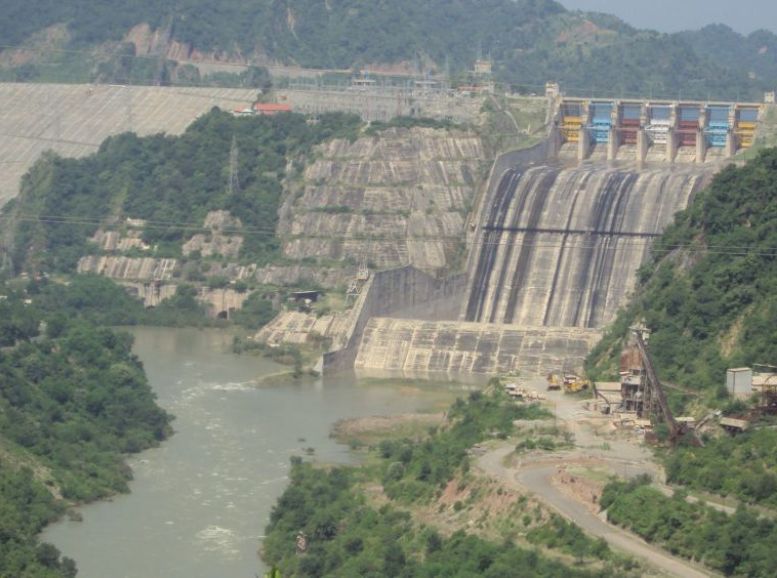The Ranjit Sagar Dam in punjab, a majestic structure cradled by the captivating landscapes near Pathankot, Punjab, India, stands as a testament to human ingenuity and a cornerstone of regional prosperity. This blog embarks on an exploration of where nature’s grandeur meets human innovation at the Ranjit Sagar Dam site, situated in close proximity to the vibrant city of Pathankot. We delve into the narrative of this hydroelectric marvel, tracing its origins to its enduring significance in the region. Here, we’ll discover how this marvel of power generation has not only reshaped the local landscape but also charted a course for sustainable progress in the heart of Punjab. Join us as we unveil the intricate story of the Ranjit Sagar Dam’s interwoven relationship with Pathankot, revealing the profound influence it has exerted on the region’s infrastructure, economic landscape, and environment.
how to reach:
By Road: The most common way to reach the Ranjit Sagar Dam from Pathankot is by road. You can hire a taxi or use your own vehicle.
The distance between Pathankot and the Ranjit Sagar Dam is approximately 15 kilometers, and the journey takes around 30 minutes. You can take the Pathankot-Dam Road, which leads directly to the dam site.
By Bus: Public buses or private mini-buses also operate between Pathankot and the Ranjit Sagar Dam. You can inquire about the bus schedule and routes at the Pathankot bus station.
By Train: There is no direct train route to the Ranjit Sagar Dam as it is a hydroelectric dam located away from major railway lines. However, you can take a train to Pathankot Railway Station from various cities in India and then proceed by road to the dam.
By Air: The nearest airport to the Ranjit Sagar Dam is Pathankot Airport (also known as Pathankot Air Force Station). From the airport, you can hire a taxi or use other modes of transportation to reach the dam site.
Best timem to visit:
- Winter (November to February):
- Winter months offer pleasant weather with cool temperatures, making it an excellent time for sightseeing.
- The clear skies and mild temperatures create ideal conditions for exploring the dam and its surroundings.
- It’s also a great time for outdoor activities like picnics or photography sessions.
- Spring (March to April):
- Spring brings about a burst of colors as flowers bloom, enhancing the scenic beauty around the dam area.
- The weather remains comfortable, making it conducive to outdoor activities and exploration.
- It’s an excellent time for nature lovers to witness the rejuvenation of flora and fauna in the region.
- Early Monsoon (June to July):
- The onset of monsoon brings refreshing showers, rejuvenating the landscape and enhancing the beauty of the surroundings.
- While the weather may be slightly unpredictable with occasional rain showers, the lush greenery and increased water flow in the dam can be captivating.
- However, it’s essential to check weather forecasts and road conditions before planning your visit during this time.
- Post-Monsoon (September to October):
- After the monsoon season, the landscape around the dam is at its greenest and most vibrant.
- The weather remains pleasant, with cooler temperatures compared to the peak summer months.
- It’s an excellent time for nature walks, birdwatching, and enjoying the scenic beauty of the area
Attractions:
The Marvel of Engineering:
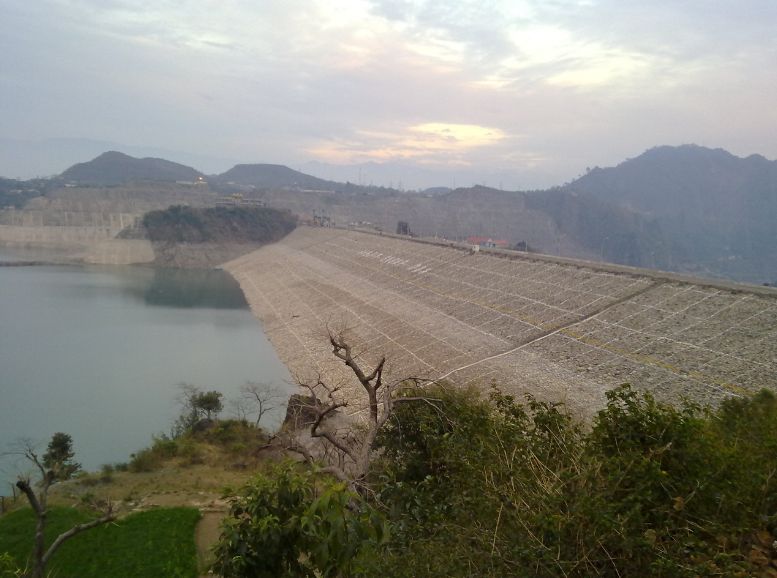
Rising majestically across the Ravi River, the Ranjit Sagar Dam, or Thein Dam as it’s also called, embodies human innovation and environmental stewardship. This multi-tasking behemoth not only wrangles the river’s energy for hydroelectric power generation, but also acts as a vital source of irrigation and flood control for the region. Standing tall at over 190 meters and exceeding 1 kilometer in length, it’s a heavyweight among India’s dams. This impressive feat of engineering exemplifies humankind’s ability to harness natural resources for a sustainable future.
A Source of Sustainable Energy:
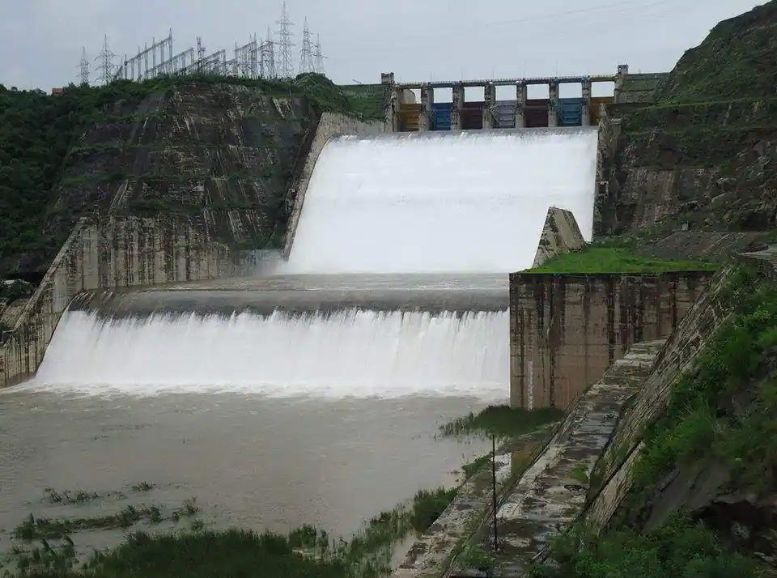
The Ranjit Sagar Dam in punjab shines as a beacon of sustainable development for the region. Its hydroelectric power station injects clean energy into the grid, powering homes, businesses, and industries across Punjab and neighboring states. This renewable resource displaces reliance on fossil fuels, lessening environmental impact and aligning with India’s push for clean energy. The dam’s reservoir acts as an agricultural lifeline, providing irrigation water to vast tracts of fertile land and boosting the region’s agricultural productivity.
Gateway to Nature’s Beauty: Ranjit Sagar Dam in punjab
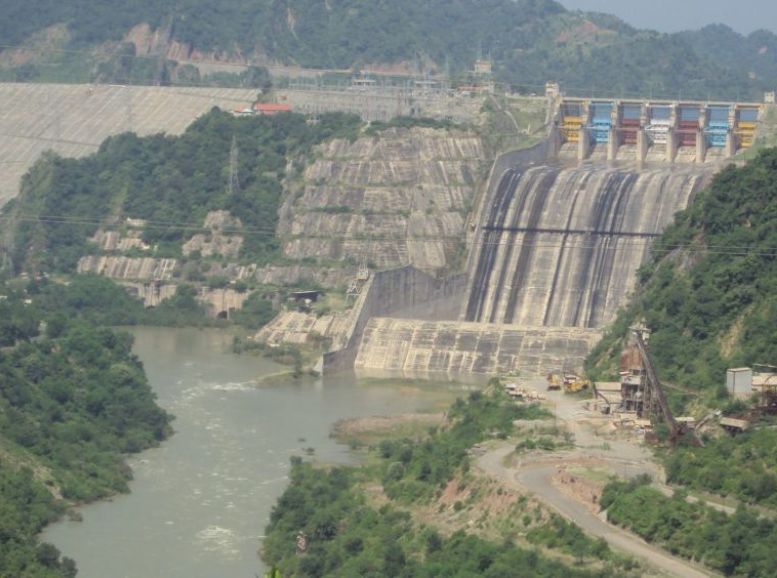
The Ranjit Sagar Dam transcends its utilitarian role, transforming into a gateway to natural splendor. The dam’s serene reservoir, a canvas of tranquility, beckons visitors with opportunities for leisure. Gentle breezes stir the water, inviting exploration by boat or offering a calming backdrop for picnics on the shore. Lush green hills cradle the reservoir, providing panoramic vistas. Nature enthusiasts can delve into the region’s rich tapestry of life, spotting a dazzling array of flora and fauna. Whether seeking a peaceful escape or an adventurous exploration, the Ranjit Sagar Dam promises an unforgettable immersion in nature’s embrace.
Preservation of Cultural Heritage:
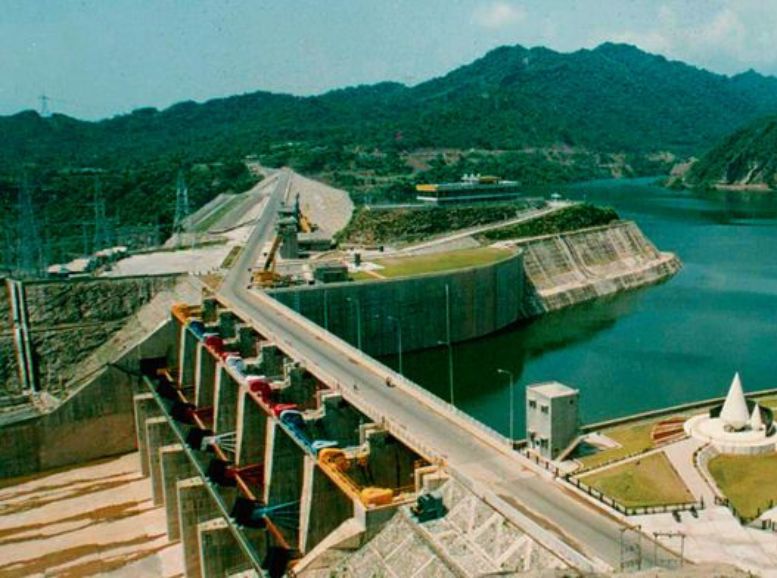
The Ranjit Sagar Dam’s impact extends beyond energy and environment. It also plays a vital role in safeguarding the region’s cultural heritage. While the reservoir submerged villages and historical sites along the Ravi River, it presented an opportunity to preserve this rich past. Archaeologists meticulously documented submerged villages’ history and traditions, ensuring their legacy lives on. Research projects unearthed artifacts, unveiling the stories of ancient civilizations that thrived here. Recognizing the area’s significance, eco-tourism and heritage tourism initiatives were launched. Visitors can now embark on guided tours or explore exhibitions showcasing the submerged sites. This integration of cultural preservation with development ensures the region’s past remains a vibrant part of its future.
Local experiences:
Folk Performances: Witness the electrifying energy of Bhangra, a folk dance characterized by energetic beats and vigorous movements . Be mesmerized by the graceful movements and colorful attire of Giddha, a folk dance performed by women . Local artists bring these traditional dances to life, offering a glimpse into Punjab’s rich cultural heritage.
Village Visits: Escape the tourist trail and venture into nearby villages to experience the warmth of Punjabi hospitality firsthand. Interact with local residents, gain insights into their daily routines, and even participate in traditional agricultural activities. This authentic experience allows you to connect with the heart and soul of the region.
Homestay Experience: Opt for a homestay experience to truly live like a local. Punjabi families welcome you into their homes, offering delicious homemade meals and a chance to participate in their daily routines. This immersive experience fosters genuine cultural exchange and creates lasting memories.
Festivals and Celebrations: Time your visit around vibrant Punjabi festivals like Lohri, celebrating the harvest season with bonfires and traditional sweets, or Vaisakhi, the Sikh New Year, marked by colorful processions and joyous celebrations . Immerse yourself in the festive spirit, witness age-old traditions come alive, and create unforgettable memories.
Travel tips:
- Be Weather Wise: Check the weather forecast for Pathankot and surrounding areas before your trip. This will help you pack appropriately and plan activities accordingly.
- Plan and Prepare: Research the dam’s opening hours, any potential entry fees, and any restrictions on visitors. This will prevent any surprises upon arrival.
- Dress for Adventure: Pack comfortable clothes and shoes suitable for walking and exploring outdoors. Sun protection is key, so bring sunscreen, a hat, and sunglasses.
- Stay Hydrated: Carry plenty of water, especially if you plan on spending a significant amount of time exploring the dam and its surroundings. Staying hydrated is crucial, particularly during hot weather.
- Respect the Culture: Be mindful of local customs and traditions, especially when visiting villages or interacting with locals. Respect their way of life and seek permission before taking photographs.
- Safety First: Always follow the safety guidelines and signage displayed at the dam site. Avoid restricted areas and supervise children closely to ensure their safety.
- Pack Smart: Don’t forget essentials like snacks, a first-aid kit, insect repellent, and a camera or smartphone to capture memories of your visit.
- Be a Responsible Tourist: Help preserve the beauty of the area by disposing of waste responsibly in designated bins or by carrying it back with you. Avoid littering.
Conclusion
As we draw the curtain on our exploration of Ranjit Sagar Dam near Pathankot, a wealth of memories washes over us. This magnificent dam wasn’t just a marvel of engineering; it served as a gateway to a region brimming with cultural richness and captivating natural beauty. From indulging in the delectable flavors of Punjabi cuisine to witnessing the electrifying energy of Bhangra folk dances, each encounter deepened our understanding of this remarkable place.
Ranjit Sagar Dam also stands as a testament to the delicate balance between progress and preservation. Our visit underscores the importance of responsible tourism, ensuring this natural treasure thrives for generations to come.
For those planning their own adventure to Ranjit Sagar Dam, travel resources like Xplro.com (a reputable travel guide website) can be invaluable. Xplro.com offers a wealth of information and insights, empowering travelers to explore hidden gems and iconic landmarks alike. Their comprehensive destination guides, insider tips, and curated recommendations can help you craft an unforgettable experience.
Faq
- What is Ranjit Sagar Dam?
- Ranjit Sagar Dam, also known as Thein Dam, is a multipurpose dam constructed across the Ravi River near Pathankot, Punjab, India. It serves purposes such as hydroelectric power generation, irrigation, and flood control.
- Where is Ranjit Sagar Dam located?
- Ranjit Sagar Dam is situated approximately 15 kilometers from the city of Pathankot in Punjab, India.
- What are the visiting hours of Ranjit Sagar Dam?
- Ranjit Sagar Dam is generally open to visitors during daylight hours. Specific visiting hours may vary, so it’s advisable to check in advance.
- Is there an entry fee to visit Ranjit Sagar Dam?
- Entry fees, if any, may vary depending on the visitor’s category (e.g., Indian nationals, foreign tourists, students). It’s recommended to inquire about entry fees before planning your visit.
- What activities can I do at Ranjit Sagar Dam?
- Visitors can engage in various activities at Ranjit Sagar Dam, including sightseeing, boating (if available), nature walks, photography, and enjoying scenic views of the reservoir.
- Are there any accommodations near Ranjit Sagar Dam?
- There are accommodation options available in nearby towns like Pathankot, offering a range of hotels, guesthouses, and homestays to suit different budgets and preferences.
- Can I bring my own food and drinks to Ranjit Sagar Dam?
- Generally, visitors are allowed to bring their own food and drinks to Ranjit Sagar Dam. However, it’s essential to dispose of waste responsibly and follow any guidelines provided at the site.
- Is there parking available at Ranjit Sagar Dam?
- Yes, parking facilities are typically available near Ranjit Sagar Dam for visitors’ convenience. It’s advisable to follow designated parking areas and abide by parking regulations.
- Are there any safety precautions I should be aware of?
- Visitors should adhere to safety guidelines provided at the dam site, avoid venturing into restricted areas, and supervise children at all times, especially near water bodies.
- Can I take photographs at Ranjit Sagar Dam?
- Yes, visitors are generally allowed to take photographs for personal use at Ranjit Sagar Dam. However, professional photography or videography may require prior permission.
- Are there any nearby attractions worth visiting?
- Yes, there are several nearby attractions worth exploring, including historical sites, temples, and natural landmarks such as Mukteshwar Temple, Shahpurkandi Fort, and Chamera Lake.
- How can I reach Ranjit Sagar Dam from Pathankot?
- Visitors can reach Ranjit Sagar Dam from Pathankot by road, either by hiring a taxi or using public transportation. The dam is approximately 15 kilometers away from Pathankot, and the journey takes around 30 minutes.


